Double jeopardy | JULY 17
As a deaf-mute Jew, Ursula Meseritz was doubly inferior in the eyes of the Nazis. Since July 14, 1933, the Law for the Prevention of Genetically Diseased Offspring had been in effect, which legalized the forced sterilization of the deaf, the blind, the cognitively disabled, epileptics, and others. Ursula had attended the only Jewish institution for the deaf-mute in Germany, the “Israelitische Taubstummenanstalt” in Berlin Weißensee. Under the Nazi regime, the use of sign language was forbidden in public schools, and in 1936, Jewish students were excluded from institutions catering to the needs of the deaf-mute. According to a “Questionnaire for Emigrants,” which she had submitted in April 1938, Ursula had been trained as a lab worker for clinical diagnostics and was hoping to work in this field in the United States. The captions on these photographs (dated July 17, 1938) show that in spite of the difficult times, the 19-year-old had not lost her sense of humor. They appear to show Ursula and her sister with their parents celebrating one last time before Ursula departed for the US.
An inappropriate insinuation | JULY 16
In May 1938, Betty Blum had contacted her nephew Stanley Frankfurt in New York. Her son Bruno had lost his position in Vienna, and it was unlikely that he would find other employment. She did not elaborate on the situation of Austria’s Jews in general since the country’s annexation by Nazi Germany but wondered whether Stanley could do something for Bruno. When Bruno received Stanley’s July 16 letter, he must have been both relieved and taken aback. While assuring him that he had been active on his behalf doing the paperwork necessary to prepare for his immigration to the US, his cousin in New York also saw fit to point out to him that if his intention was coming to America for the purpose of “living a life of ease,” he was on the wrong track. Was Stanley really so uninformed about the plight of Austrian Jewry under the new authorities? It can be assumed that his sincere efforts on his Austrian cousin’s behalf made up for the bafflement that must have been caused by his inappropriate insinuation.
Something to brighten your Sabbath | JULY 15
After the prohibition of Jewish settlement in Chemnitz in the Middle Ages, it was not until the late 1860s that Jews could legally settle in the Saxonian city. By the end of the 19th century, the community had grown so large that its synagogue on Neugasse 3 no longer sufficed, and in 1899, Rabbi Dr. Mühlfelder festively inaugurated a new building at Stephansplatz. A number of smaller prayer rooms accommodated the religious needs of the Eastern European Jews who had been coming to the city since the beginning of World War I and over time began to constitute more than half of the city’s Jewish population. On a Friday in what must have been the congregation’s most difficult year to date, a woman named Gerda gave this photograph of the Synagogue to the congregation’s Rabbi, Dr. Hugo Fuchs, with a note expressing her hope that it might brighten his Sabbath.
Evicted from Red Vienna | JULY 14
For a dyed-in-the-wool social democrat like the journalist, translator and writer Maurus (Moritz) Mezei, the changes that quickly took hold in Austria after the country’s unimpeded annexation by Nazi Germany must have been doubly troubling. During the period known as “Red Vienna,” the first-ever period of democratic rule in the city from 1918 to 1934, the Mezei family had moved to the “Karl-Marx-Hof,” a public housing project. Starting in 1938, “non-Aryan” families, including the Mezeis, were threatened with expulsion from the compound. Tenant protections initially remained in place for Jews, but they no longer applied to public housing. On June 10, Mezei had applied for immigration to Switzerland, but the reply, written on July 14, was negative. Only if he was to procure an immigration visa from a country overseas would Swiss immigration authorities reconsider his case and possibly grant temporary asylum.
No mountain high enough | JULY 13
Käthe Hoerlin and Regina Ullmann had at least three things in common: both had Jewish ancestors, both converted to Catholicism, and both had the trajectories of their lives impacted by the Nazi regime. Regina Ullmann, a poetess and writer, was expelled from the Association for the Protection of the Rights of German Authors (Schutzverband Deutscher Schriftsteller) and left Germany to return to her native St. Gallen, Switzerland. Käthe Hoerlin’s first husband, the music critic Willi Schmid, was executed by the regime in 1934 in a case of mistaken identity. Days after this tragedy, Käthe, who was the secretary of the ill-fated Nanga Parbat expedition, got news that nine of its participants had died trying to climb the famed Himalayan peak. In 1938, thanks to the help of a Nazi official who had assisted her with her compensation claims after Schmid’s death, she got permission to get married to the non-Jewish alpinist and physicist Hermann Hoerlin (marriages between “half-Jews,” as she was classified, and “persons of German blood” required special permits which were rarely given). Hoerlin was highly critical of the regime’s interference in scientific research. This letter, which exudes sincere empathy and interest in her friend’s well-being in her new surroundings as well as groundedness in her Catholic identity, was written by Regina Ullmann just after the Hoerlins had emigrated to the United States.
Namesakes | JULY 12
When 28-year-old Kurt Kleinmann of Vienna wrote to the Kleinmans in America, he could not have hoped for a kinder, more exuberant response than what he received from 25-year-old Helen. After finding the address of a Kleinman family in the US, Kurt had asked the total strangers in a letter dated May 25 to help him leave Austria by providing him with an affidavit. He had finished law school in Vienna and was now running his father’s wine business. Helen readily adopts the theory that the Kleinmanns and the Kleinmans might actually be related to one another, promising her “cousin” to procure an affidavit for him within the week. Affably and vivaciously, she assures him that the Kleinmans will correspond with him to make the time until departure feel shorter.
Rejection letter | JULY 11
“The position under discussion has been filled,” was the terse answer Johanna Rosenthal, a former postal clerk, received to her application for a job as a telephone operator. After 14 years of service with the Deutsche Reichspost, she had been dismissed at the end of 1933. As she points out in her letter, her employment in public service as a Jew has been made impossible by the “Law for the Restoration of the Professional Civil Service.” The provisional pension of 68 Reichsmark that she had been granted was not enough to live on, so she sought new employment.
Papers in order | JULY 10
Jews wishing to escape the chicanery and physical danger under the Nazis by emigrating had to procure a large number of documents to satisfy both the Nazi authorities and the authorities in the country of destination. In order to obtain permission to leave Germany, applicants had to prove that they did not owe any tax money to the Reich. In addition to the taxes levied on all citizens, prospective emigrants had to pay the co-called “Reich Flight Tax.” Originally introduced during the Great Depression of the late 1920s and early 1930s, the original purpose of the tax was to prevent capital flight from further depleting the national coffers. Under the Nazis, its main purpose was to harass and expropriate Jews. The tax authorities under the Nazi regime certainly did a thorough job. When the Weichert family of Vienna, consisting of the lawyer Joachim Weichert, his wife Käthe, and the couple’s two children, Hans and Lilian, prepared to leave, a tax clearance certificate was issued even to the ten-year-old son. The document was valid for one month. Having all required documents ready and still valid by the time their quota number came up was an additional challenge faced by those wishing to emigrate.
It will get easier | JULY 9
Mrs. Pollak in Teplitz (Teplice), Czechoslovakia, was vacillating between relief that her daughter was safely out-of-reach from the Nazis reach and worry about 17-year-old Marianne’s physical and emotional wellbeing. After changing her initial plans to go to Palestine on Youth Aliyah, the young girl was now in England all by herself. The annexation of Austria by Nazi Germany had heightened fears of a similar fate in Czechoslovakia. Refugees were kept out of the country, and local Jews had double the reason to worry – both as Czechs, and as Jews. With news from Vienna and Palestine bleak and Czechoslovakia’s future uncertain, Mrs Pollak made a loving effort to reassure Marianne that things would get easier for her in the new country over time.
Staff exodus | JULY 8
The Zionist Federation of Germany was in a tricky position. While it supported the emigration of Jews from Nazi Germany, it struggled with the consequences of constantly losing capable staff members, especially on the leadership level. Nevertheless, Benno Cohn, member of the Federation’s executive board, generously supported yet another departing colleague with a deeply appreciative letter of recommendation. Rudolf Friedmann had been associated with the Zionist Central Office since 1933 in various capacities, serving it with the utmost diligence and dedication. Cohn praises his organizational abilities and ideas and warmly recommends Friedmann to any Zionist or other Jewish organization.
Loew Blow | JULY 7
Until its forcible closure, reported on by the Jewish Telegraphic Agency on July 7, 1938, the Loew Sanatorium served as a private hospital for the well-heeled in Vienna. Prominent Jewish and non-Jewish patients came here for treatment and surgery. Among the institution’s many illustrious patients were the philosopher Ludwig Wittgenstein, the composer Gustav Mahler, the painter Gustav Klimt and the socialite and composer Anna Mahler-Werfel. The JTA notice specifically mentions the Jewish physicians who lost their livelihood due to the hospital’s closure. According to the criteria established by the Nazis, there were no less than 3,200 Jews or “mixed-blood descendents of Jews” among Vienna’s 4,900 physicians, whereas about one third of the physicians in the country as a whole were Jewish.
Dr. Singer’s Suitcase | JULY 6
Lilly Popper (later Lilian Singer) was born in 1898 into a German-speaking family in Brünn (Brno). After graduation from the Gymnasium (high school), she began medical school in Vienna, later transferring to Berlin. There, in 1923, she got her driver’s license, which was just beginning to become socially acceptable for women. After a longer interruption, during which she worked for her father’s business and for a company in Amsterdam, she went back to school and in 1933 graduated from the Friedrich Wilhelm University in Berlin, which had been accepting women as guest auditors since 1892 (and as full-time students since 1908), an opportunity initially seized by a disproportionately large number of Jewish women. With the “Law against the Overcrowding of German Universities” of April 1933, the Nazis limited the access of both Jews and women to higher education, but these regulations did not apply to foreigners. After graduation, Lilian returned to Czechoslovakia. In 1938, she was a resident in surgery at a teaching hospital in Prague. The suitcase shown in the photograph accompanied her on her many journeys.
Jewish emigration | JULY 5
The “Aid Society of German Jews,” founded in Berlin in 1901, mainly supported Jewish immigrants to Germany. After the Nazis came into power, the association, now forced to call itself “Aid Society of Jews in Germany,” helped to facilitate Jewish emigration from Germany. In this context, it offered help with questions concerning government agencies, passport issues, or vocational retraining and also granted financial support. An important organ for its work was the periodical Jüdische Auswanderung (“Jewish Emigration”), which informed its readers about general living and work conditions but also about specific questions regarding Jewish culture in various countries. In the July 1938 issue, the US, Cuba, and the Philippines were introduced.
“100% recreation” | JULY 4
In the 1920s, the Catskill Mountains began to develop into a resort area that enjoyed great popularity with Jewish immigrants often unwelcome in non-Jewish hotels. Therefore, by the 1930s, “Borscht Belt” began to catch on as a moniker for the region. After humble beginnings, with Eastern European Jewish farmers in the area renting out rooms to city dwellers in need of peace and quiet, over time, boarding houses turned into small hotels and some of the small hotels into big hotels. While Jews of Eastern European extraction constituted the majority of hosts and vacationers, the political events of the 1930s led to an increase in the number of German-speaking Jews wishing to trade the hustle and bustle of the city for the relaxed atmosphere of the Catskills. In the July issue of the Aufbau, the Park Plaza Hotel in Fleischmanns, New York (named after Ch.L. Fleischmann, a Hungarian Jew who in the 19th century invented America’s first commercially produced yeast) offered Independence Day weekend vacations with four meals a day and a special 4th of July dinner. It can be assumed that the prospect of celebrating their new country among fellow European Jews in an establishment “widely acknowledged for exquisite, copious American, Hungarian, and Viennese cuisine” was attractive to the grateful newcomers.
No keeping up | JULY 3
This letter from a father to his children is dominated almost entirely by concerns about transferring people and goods out of Germany. According to the writer, regulations were changing so rapidly that it was hard to keep track. Lately it had been decreed that both for articles to be shipped and for personal baggage, itemized lists had to be submitted which were subject to authorization. This could be rather time-consuming. The writer of the letter points out that the speed with which answers are given is not keeping up with the speed of the changes necessitating inquiries.
Impeccable references | JULY 2
The German lawyer Paul Schrag was employed at the Institut d’Economie Européenne in Brussels. He was planning to embark on the journey to the United States from Le Havre on July 15 with his Jewish wife, Suzanne, and their infant child. In his letter of July 2 to Prof. Max Gutzwiller in Fribourg, Switzerland, Schrag asks for a letter of reference for use in the United States. Gutzwiller, a fierce critic of the Nazis and also married to a Jewish woman, had left his chair for German Private Law and Roman Law at the University of Heidelberg in 1936. Schrag obviously enjoyed the esteem of his employers. The management of the institute had agreed to reserve the position of director general for him until the end of the year and even entrusted him with a “research mission” in order to enable him to look into his professional prospects in America without major pressure.
Radio, gramophone, newspapers, novels | JULY 1
In his article “Ten Commandments for Assiduous Language Learners,” published in the July issue of the Aufbau, Dr. Eugene I. Stern recommends making use of the entire arsenal available to the modern student of American English: radio, gramophone, newspapers, and novels. The meticulousness with which he describes what he considers the most promising methodology for language acquisition meets every stereotype associated with German Jews. Dr. Stern does not promise any shortcuts, and his assessment of the language learner’s prospects is not the most optimistic. He opens by declaring mastery of a foreign language to be an unattainable goal. Nevertheless, younger German-Jewish immigrants in America tended to acquire proficiency in English within a few years, while their counterparts in pre-state Palestine were notoriously slow and reluctant to pick up Hebrew. German Jews in America were assisted in their endeavors by various institutions, such as the National Refugee Service, the Adult Education Council, the YMCA, the YWCA, which offered free English classes to the newcomers.
Shattered existence | JUNE 26
The first major rupture in artist Gustav Wolf’s biography had occurred during World War I. He had volunteered for frontline duty and was badly injured. His brother Willy was killed in combat. The works in which he processed his wartime experiences leave no doubt about his feelings. Instead of glorifying war, he shows its horrors. His confrontation with antisemitism during and after the war led him to an increased awareness of his own Jewishness. In 1920 he accepted a professorship at the Baden Art School in Karlsruhe, trying to realize his ideal of an equitable partnership between teacher and student. After a year, he quit this “dead activity,” referring to the school as “an academy of schemers.” In 1929, he designed the set for Fritz Lang’s silent film “Woman in the Moon,” an early science-fiction movie. Upon the Nazi rise to power in 1933, he canceled his memberships with all the artists’ associations to which he had belonged. In his letter to the Baden Secession, he explained his decision with the following words: “I must first get my bearings again. The foundations of my existence have been called into question and shaken.” After extended stays in Switzerland, Italy and Greece, he returned to Germany in 1937. In February 1938, he boarded a ship to New York. June 26, 1938 was his 49th birthday.
Clutching at straws | JUNE 16
Erika Langstein was a young English teacher living in Vienna. In June 1938, having experienced the persecution of Jews in the Austrian capital for several months already, Erika sent a letter to Donald Biever, an American citizen, imploring him to help her and her Jewish father flee Austria by issuing an affidavit for them. Nothing would be unusual about this, except for the fact that the young woman had met Biever just once, briefly, on a train ride a year earlier, and had not communicated with him since. Despite the tenuous nature of their relationship, Erika describes to Biever the hopeless of the situation in Vienna. She also attaches a photo, in case Biever does not remember their encounter.
Universal humanity | JUNE 6
In his “Remarks about the Feast of Weeks,” published in the June issue of the “Jewish Community Paper for the Rhenish Palatinate Region,” Rabbi Dr. Ernst Steckelmacher of Ludwigshafen poses a real challenge to his readers. He interprets the Book of Ruth, one of the readings during the Feast of Weeks, as an example of Judaism’s emphasis on the precedence of the universal over the particular. Through Ruth, who embodies universal humanity, the book shows that goodness can be found anywhere. This was not an intuitive message at a time when the ostracism of Jews from German society forced them to turn inward. June 6, 1938, was not only the second day of Shavuot, but also the 80th birthday of Claude G. Montefiore, the President of the World Union of Progressive Judaism. Dr. Steckelmacher acknowledges this occasion and reinforces his universalist message by drawing attention to the similar sentiments of Claude Montefiore.
Paperwork | MAY 26
Since 1937, Lina and Siegmund Günzburger of Lörrach in southwest Germany and their son, Herbert, had been preparing their paperwork for emigration. The requirements amounted to nothing short of a nightmare. Prospective emigrants had to procure numerous personal documents, letters of recommendation, and affidavits. They were also required to prepare an inventory of all their belongings and to document that they had paid all their taxes. Apparently, the required documents also included this copy of the marriage certificate for Siegmund’s grandparents. Especially perfidious was the so-called “Reich Flight Tax.” Originally introduced in the waning days of the Weimar Republic to prevent capital flight in reaction to the government’s austerity policy, under the Nazis, it became a tool to cynically punish the Jews for leaving a country that was doing everything it could to make it unbearable for them to stay.
Education disrupted | MAY 16
Ruth Wertheimer was born in Halberstadt (Saxony Anhalt) in 1915. Thanks to the revenue from a successful corset and lingerie shop with several branches, the family was living comfortably. However, in 1929, several years before the Nazis’ ascent to power, the family business had already suffered economic damage due to a libelous, antisemitically motivated claim against one of its proprietors, Ruth’s aunt Johanna. In 1932, while attending a business school in Berlin, where the family had moved in Ruth’s childhood, she was subjected to such intense antisemitism from teachers and classmates that she decided to quit before graduating. The passport displayed here was issued on May 16 in Paris and also lists Paris as Ruth’s place of residence. Her mother and stepfather had moved there in 1935. In Paris, Ruth resumed her studies.
“Finis Austriae” | MAY 6
While Sigmund Freud, the “father of psychoanalysis,” clearly did not underestimate the significance of the Anschluss—“Finis Austriae” was the succinct commentary he jotted down in his diary—even the search of his home and publishing house by the Nazis did not prompt him to explore emigration. As a matter of fact, he reportedly commented on the unsolicited visit of the Nazis, who had made off with a substantial amount of money, with the dry remark, “I have never taken so much for a single visit.” But when his daughter Anna, herself a renowned psychoanalyst, was interrogated by the Gestapo shortly thereafter, the usually restrained Freud’s reaction was highly emotional, and he began weighing the various offers of asylum he had received. May 6, 1938 was his last birthday in Vienna.
Starting over at 40 | APRIL 26
Marseille was one of the most important ports of departure for the refugees on their way overseas. It was here that Moses Wainstein obtained the papers he still needed for his emigration to Uruguay. This certificate of vaccination was written in Spanish for submission to the authorities there. The former Berliner had already had his belongings shipped to Marseille by a German company. Wainstein was 40 years of age at this point.
At-risk youth | APRIL 16
In 1938, the first day of Passover fell on April 16. As they did every year, the inhabitants of the Jewish Residential Home for Youth and Apprentices in Berlin gathered around a festively set dinner table for the second Seder. Under the dedicated management of Paul and Friedel Joseph, the home provided its charges with opportunities that went well beyond practical needs like housing and vocational training. They also strove to provide them with cultural and intellectual stimulation that would expand their horizons. The boys and young men, ranging in age from 14 to 21, had been removed from their homes due to behavioral problems. According to Friedel Joseph, life in the home was still going on “relatively unimpeded” at this point, but the political situation cannot have been lost on its inhabitants. The Passover message of liberation from bondage under a tyrannical ruler must have resonated very strongly at this year’s celebration.
Ausdruckstanz | APRIL 6
The April 6 event at the Jüdischer Kulturbund (Jewish Cultural Association) in Hamburg was dedicated to dance. Elsa Caro, also known by her stage name, Juana Manorska, used challenging music not originally intended for dance as the inspiration for her performance. Since the beginning of the 20th century, the fixed, formulaic repertoire of movements in classical ballet seemed limiting and outdated to some. German dancers, among them Elsa Caro and the “half-Jewish” Gret Palucca, were at the forefront of those experimenting with new forms, a movement that gave birth to Ausdruckstanz, also known as “Expressionist Dance” or “modern dance.”
Denaturalized | MARCH 26
The passage in July 1933 of a law allowing the government to revoke the citizenship of those naturalized after the end of WWI had given Nazi officials a tool to deprive “undesirables” of their citizenship. The law targeted the Nazis’ political adversaries as well as Jews; 16,000 Eastern European Jews had gained German citizenship between the proclamation of the republic on November 9, 1918 and the Nazi rise to power in January 1933. Among those whose names appear on the expatriation list dated March 26, 1938 are Otto Wilhelm, his wife Katharina and the couple’s three children, residents of Worms and all five of them natives of Germany.
Colleagues across continents | MARCH 16
Having barely begun his career as a teacher at the Goethe-Gymnasium in Frankfurt/Main, Hans Epstein lost his job shortly after the Nazi rise to power in 1933. After a brief intermezzo as a teacher at the famous “Philanthropin” in Frankfurt/Main, a progressive Jewish school with the motto “For Enlightenment and Humanity”, he became a co-founder of the “Anlernwerkstatt”, which prepared Jewish youngsters for emigration to the US. The mathematician Otto Toeplitz, a passionate educator who had lost his position at the University of Bonn in 1935, was now teaching children and organizing the emigration of students to the United States. In this letter, Epstein asks Toeplitz for a letter of recommendation and for contacts in the United States that might be useful for his endeavors.
Antisemitism in Austria | MARCH 6
In 1933, the “Fatherland Front” had been established as the sole representative body of Austrian citizenry and as a replacement for parliamentary democracy. It had strong ties to the Catholic Church and was deeply antisemitic. Nevertheless, there were Jews among its ranks, and it saw itself as opposed to the (Protestant-dominated) Nazis. When Nazi groups, clearly emboldened by their recently improved status, took to the streets, proudly parading with swastikas, the Jewish Telegraphic Agency reported on an antisemitic demonstration at the University of Vienna, an institution where anti-Jewish sentiment had been rampant for centuries. On the same day, the news agency informed its readership about counter demonstrations organized by the Vaterländische Front.
From Cologne to Kenya | FEBRUARY 26
Despite the restrictive immigration policy of the British colonial power, twenty-year-old Paul Egon Cahn, a car mechanic from Cologne, managed to flee to Kenya with the help of this passport. Paul’s sisters, Erika and Inge, reached safety in England and Australia respectively. The siblings’ parents, Siegfried and Regina Cahn, remained behind in Germany. In many cases, refugees not only had to cope with the loss of their homes and property and the separation from their relatives but were also forced to take on the challenges posed by foreign climate zones and cultures.
25 Pfennige | FEBRUARY 16
In mid-February 1938, the Jewish Telegraphic Agency, for years an attentive observer of the situation of German Jews, reports once again on the precarious position of Jews in Germany and the struggle of the Jewish Winter Relief to do justice to the acute needs of the community’s poorest. While the new, obligatory contribution addressed ongoing needs and made it easier to survive the winter, the numerous laws imposed by the Nazis since 1933 that banned Jews from various professions lead to an irreversible deterioration of their material situation.

